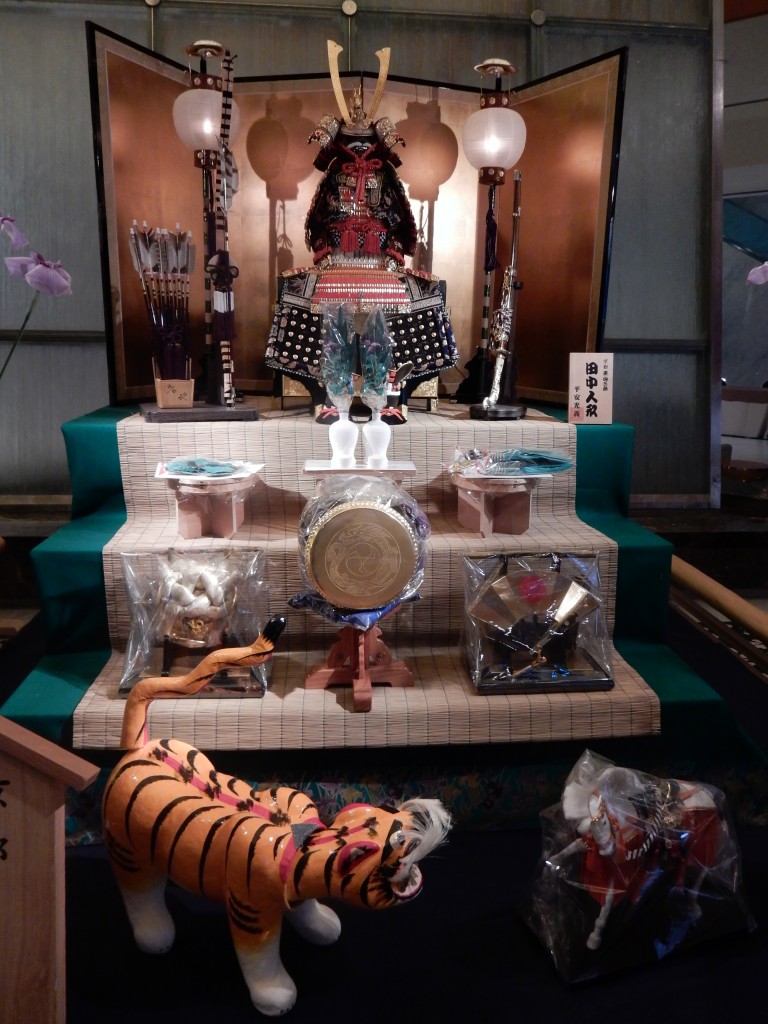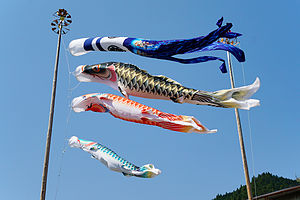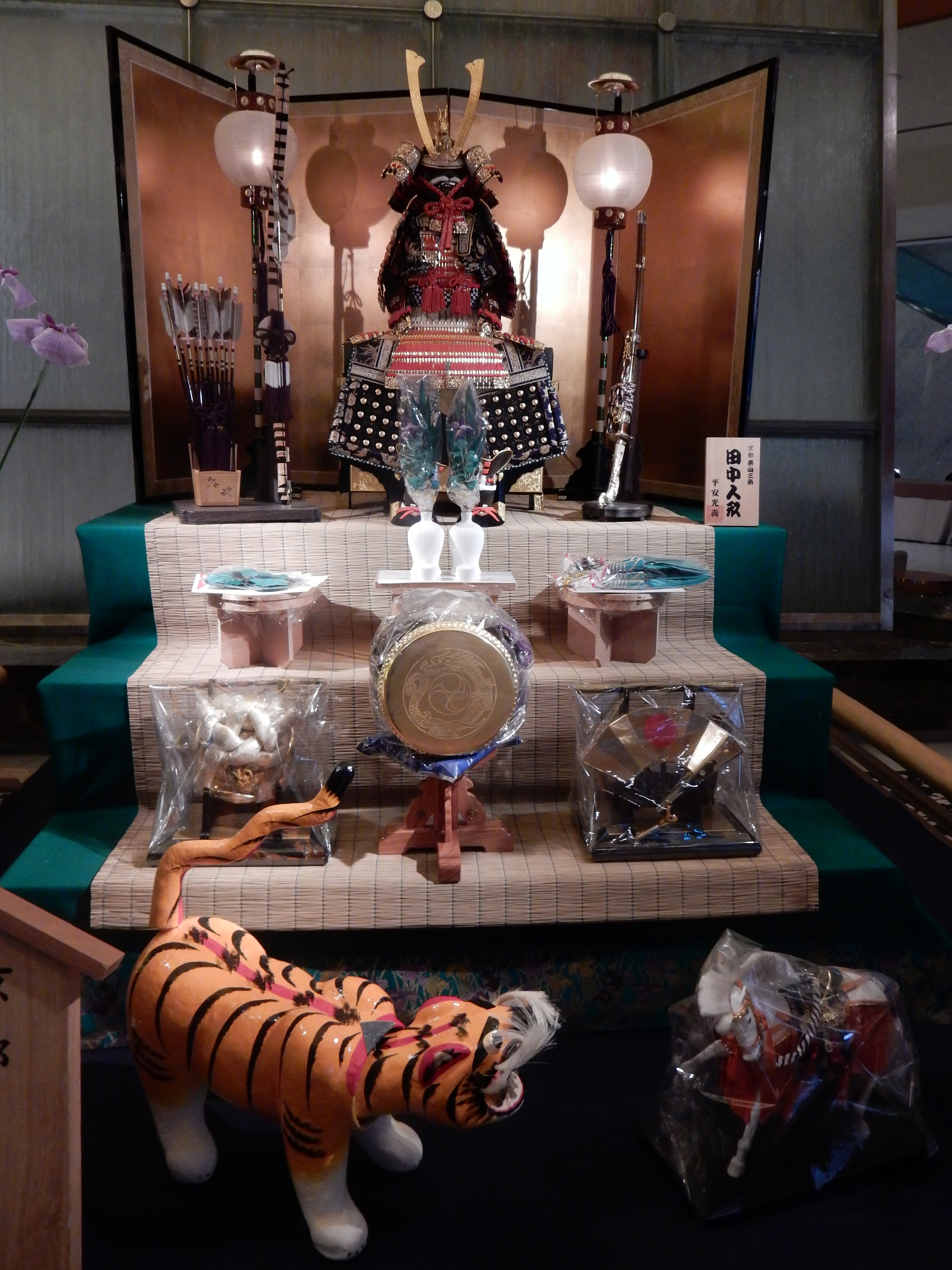
Full display of Boy’s Day paraphernalia
May 5 is officially Children’s Day, a national holiday established in 1948 that is part of Golden Week (a series of holidays at the beginning of May).
In ancient times people suffered disease around this time of year due to the change in temperature and humidity. Families with boys traditionally displayed warrior dolls and miniature armour in their homes, especially for 5 year olds, in order to make them strong in later life.
It’s a custom linked to the 7-5-3 festival, in which the number five applies particularly to the development of boys. Hence the date of the festival – May 5 (5/5). March 3 (3/3) was the traditional Girl’s Day, though the postwar government has conflated the two into one Children’s Day.
In the picture above can be seen the accoutrements of warriors – armour, bow and arrow, swords. Also saké holders, chimaki and kashiwa mochi (types of rice cakes). There’s a seasonal flower too, a type of iris (the fragrance was believed to drive away bad air and have a healing effect).
On the bottom shelf is a taiko drum, a helmet and a prestigious fan with the sun symbol. In front of the display is a tiger for strength and a white horse, symbol of the élite. Whichever boy gets this display is going to have an impressive future!
Around this time families put up carp-shaped koinobori flags (according to Chinese legend, a carp strong enough to swim upstream will become a dragon}. It’s said the way the flags blow in the wind looks like they are swimming. Traditionally there is one carp for each member of the family.

Carp streamers (courtesy Wikicommons)


I wasn’t aware that in Shinto temples
tigers are used like in Taoist temples…I love the tiger shrines in Taoist temples…we all can use a Tiger in our lives sometimes!
Actually, Dave, tigers are not used in Shinto shrines… this is just a special doll’s display for Boy’s Day, but the symbolism nonetheless is certainly to put a tiger in the tank. Shinto shrines are guarded by Chinese dogs, or komainu, though some do look more like lions (shishi).